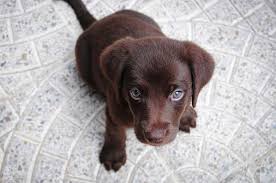What does folliculitis look like in dogs? Dogs with folliculitis will have one or more skin lesions on the body. It may start as a small raised area on the skin that looks like acne (called a papule). The area may become more raised and fill with pus (called a pustule).
What causes folliculitis on dogs? Folliculitis in dogs is most commonly caused by bacteria, but other culprits include parasitism, fungal infections, systemic disease, immune system disorders, endocrine issues, and local trauma. Your dog’s folliculitis may be caused by the following conditions: Canine acne. Skin-fold pyoderma.
Is folliculitis contagious from dog to dog? The condition itself isn’t considered to be contagious; not between canines or to human beings. But, it’s possible for a few conditions that are causing it to be transmittable to additional pets and humans, too. Ringworm infestation and sarcoptic mange include some of the extremely contagious conditions.
What is the fastest way to heal folliculitis?
The following approaches may help relieve discomfort, speed healing and prevent an infection from spreading:
- Apply a warm, moist washcloth or compress.
- Apply over-the-counter antibiotics.
- Apply soothing lotions.
- Clean the affected skin.
- Protect the skin.
What does folliculitis look like in dogs? – Additional Questions
What triggers folliculitis?
Folliculitis is most often caused by an infection of hair follicles with Staphylococcus aureus (staph) bacteria. Folliculitis may also be caused by viruses, fungi and even an inflammation from ingrown hairs.
What can be mistaken for folliculitis?
The types of psoriasis that can resemble folliculitis include : Plaque psoriasis, which causes dry, red patches on the skin. The patches may be raised, itchy, and painful. Guttate psoriasis, which produces small, scaling lesions on the skin.
How long does it take for folliculitis to go away?
Mild folliculitis usually heals on its own in about 2 weeks. You can take care of yourself at home with: A warm compress. This may ease itching and help healing.
Why is my folliculitis not going away?
Chronic folliculitis can be more difficult to treat. Antibiotics and other medications may not clear up chronic cases. If other treatment options fail, your doctor may recommend laser hair removal. During treatment, you should refrain from removing hair by plucking, waxing, or shaving.
How can you tell if folliculitis is fungal or bacterial?
They may take a swab of the infected skin to test for which bacteria or fungus is the cause of the folliculitis. In rare cases, a doctor may order a skin biopsy to exclude the possibility of other causes.
What is the best cream for folliculitis?
What is the best medication for folliculitis?
| Best medication for folliculitis |
|
|
| Cortizone-10 (hydrocortisone cream) |
Over-the-counter corticosteroid |
Topical |
| Centany (mupirocin) |
Antibiotic |
Topical |
| Zovirax (acyclovir |
Antiviral |
Topical |
| Elimite (permethrin) |
Antiparasitic |
Topical |
What does folliculitis look like?
In most cases, the main symptom of folliculitis is red bumps that look like pimples on your skin. These could also look like they’re white-filled bumps or they could be filled with pus (pustules). Folliculitis can feel itchy and uncomfortable. Many people feel the need to scratch when they have folliculitis.
How do you stop folliculitis from spreading?
Avoid shaving, or shave less frequently. Use shaving cream, and apply moisturizer after shaving. Practice proper shaving techniques, and don’t rush. Only go in hot tubs and pools that you know are clean and well chlorinated.
Can Neosporin cure folliculitis?
To get rid of any folliculitis you may already have, Lowenthal says to dab on an over-the-counter antibiotic cream or ointment, like Bacitracin or Neosporin, which will help clear away the infection inside the hair follicle.
How do you treat folliculitis in dogs?
Topical therapy most often involves the use of antimicrobial shampoos, whereas systemic therapy usually includes oral antibiotic medications. In the case of bacterial folliculitis, long-term use of both topical and systemic antimicrobials is typically required (three to twelve weeks).
What kills folliculitis bacterial?
Hydrogen peroxide can help get rid of some bacteria and fungi that cause folliculitis. Dilute the hydrogen peroxide with clean, sterile water or use it directly. Apply it onto your skin with a cotton swab.
Can I put hydrogen peroxide on folliculitis?
Hydrogen Peroxide
It works just as well for folliculitis. The chemical mix will immediately kill off bacteria and fungus, and the excess can be wiped off with disposable towels. You can repeat applications of hydrogen peroxide.
Does apple cider vinegar help folliculitis?
Adding a cup of apple cider vinegar to a warm bath may help fight the bacteria that cause folliculitis and keep the skin on the buttocks clear.
Is Vaseline good for folliculitis?
Don’t Apply Petroleum Jelly
Since it is very heavy and thick, it will only block your hair follicles and spread the infection. Instead, switch to a lighter moisturizer with aloe vera.
Should you pop folliculitis?
Resist the temptation to squeeze or pop a folliculitis boil. While you might manage to express the pus and other infected fluid, you also run the risk of pushing those toxins more deeply into the skin, to the point that they may enter your bloodstream. Instead, let your dermatologist diagnose and treat the problem.
What happens if folliculitis goes untreated?
Boils and carbuncles
If folliculitis is left untreated, boils (or skin abscesses) can develop. As the hair follicle becomes deeply infected, the boil will come to a head and may drain. The boil may be painful and red. A large cluster of boils may also appear as many follicles become infected.
What happens if you pick at folliculitis?
If it doesn’t go away, an ingrowing hair can become infected, make the skin dark, or leave a scar. This is more likely if you’ve been scratching or picking the hair.
